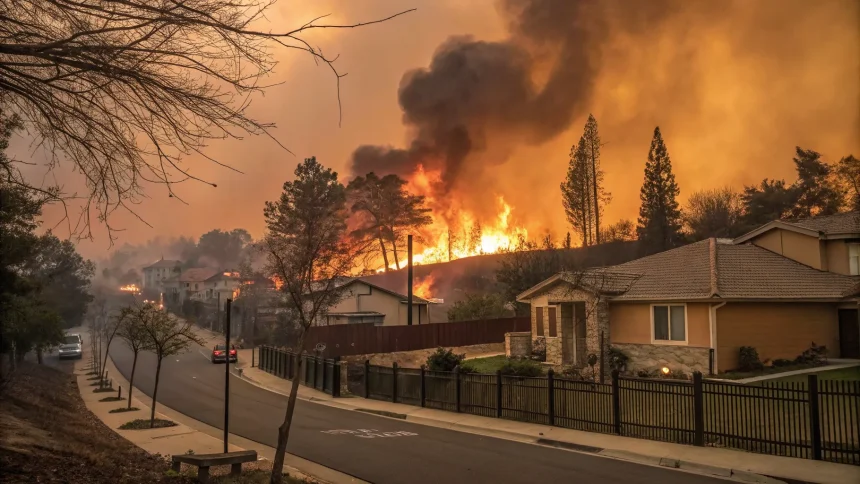Federal authorities have charged Jonathan Rinderknecht with maliciously starting the Palisades Fire, a case now tied to a projected damage figure that would rank among the costliest disasters in U.S. history. The charge raises urgent questions about accountability, preparedness, and the growing financial exposure to extreme fires.
“Federal authorities charged Jonathan Rinderknecht with maliciously starting the Palisades Fire, which may cause up to $164 billion in total losses.”
The allegation centers on a blaze that investigators say triggered widespread harm. While the legal process begins, officials and risk analysts are assessing what a $164 billion loss would mean for insurance markets, public budgets, and families trying to rebuild. The case highlights how one ignition can ripple through entire regions and economies.
What is known so far
Prosecutors say the act was intentional. They placed Rinderknecht at the origin of the Palisades Fire and filed federal charges that carry severe penalties if proven. Authorities have not publicly detailed a motive. The court will weigh evidence in the months ahead.
The cited loss estimate points to a tally that often includes damaged property, business interruption, lost wages, infrastructure repairs, environmental recovery, healthcare costs, and the price of firefighting. Final numbers typically change as claims and assessments are verified.
Why the loss estimate matters
A $164 billion figure would put the event in the tier of the most expensive disasters on record. Analysts say such totals strain private insurers, push more costs onto state and federal programs, and reshape where and how people can afford to live.
- Homeowners could face higher premiums or reduced coverage availability.
- Local governments may face budget gaps from tax base erosion and rebuilding needs.
- Infrastructure projects can be delayed or reprioritized to fund repairs and fire mitigation.
Economists warn that repeated large losses can lead to longer recoveries and more debt for communities. Lenders also examine fire exposure, which can affect housing markets and small business financing.
Legal stakes and accountability
The charge of malicious ignition places individual responsibility at the center of a disaster usually framed by weather and terrain. Legal experts note that proving intent is rigorous. Defense counsel is likely to challenge origin-and-cause evidence, chain of custody, and witness statements.
Convictions in intentional fire cases can bring long prison terms and restitution orders. Yet restitution rarely covers broad social and economic losses. The gap between legal penalties and real-world costs often falls to taxpayers, aid programs, and private relief funds.
A pattern of escalating risk
In recent years, fires have grown larger and more destructive, driven by dense fuel, heat, wind, and expanding development into high-risk zones. Emergency managers say that even a single spark—whether accidental or intentional—can set off a chain of events that overwhelms response systems.
Fire agencies have promoted home hardening, defensible space, and community evacuation plans. But uptake varies by region and income. Risk reduction often requires up-front spending that some households cannot afford without subsidies or grants.
Insurance and public finance pressure
The insurance sector tracks wildfire exposure closely. When losses spike, insurers may raise rates, narrow underwriting, or exit markets. Public insurers or last-resort pools then absorb risk, shifting liabilities to state budgets. Federal disaster aid can bridge gaps, but it is not designed to be the sole backstop for recurring catastrophes.
Policy analysts argue for more investment in mitigation to reduce the scale of future claims. They point to targeted vegetation management, power grid safety upgrades, stricter building codes, and community evacuation infrastructure as cost-effective measures over time.
What experts recommend now
While the case moves through court, risk specialists suggest immediate steps for communities and households near fire-prone areas:
- Harden homes with ember-resistant vents, fire-resistant roofing, and cleared perimeters.
- Update evacuation routes, practice drills, and ensure alerts reach vulnerable residents.
- Review insurance coverage and document property conditions and inventories.
- Support fuel reduction and defensible space projects through local partnerships and grants.
For governments, experts advocate for consistent funding of mitigation, faster rebuilding standards, and data-sharing across agencies to improve early detection and response.
The Palisades Fire case will test how the justice system addresses the human role in large-scale disasters and how financial systems absorb mounting losses. As the legal process unfolds, communities are watching the numbers—and planning for a future where one ignition can carry a nationwide price tag.







